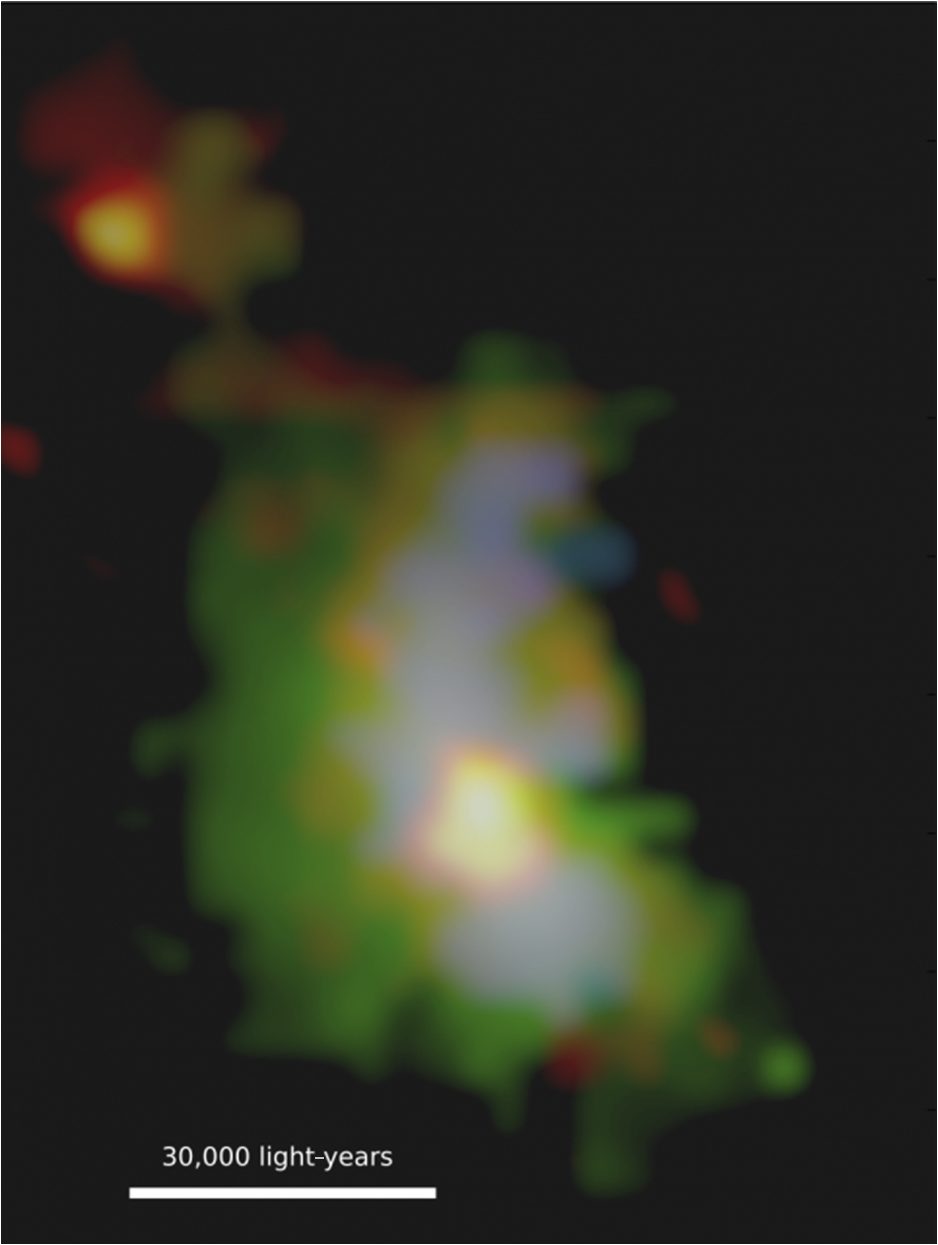'Pushy' Black Hole [1]
A giant black hole at the center of a galaxy more than nine billion light-years away is blowing massive winds throughout the galaxy, perhaps shutting down the birth of new stars. The black hole is near the center of the bright blob just below center in this image, which combines observations from the Keck Observatory in Hawaii and ALMA, a radio telescope in Chile. The winds are depicted in blue, while green shows gas around the black hole. Charged particles are captured by a powerful magnetic field and shot into space as "jets" before the particles can enter the black hole. These jets push away the surrounding gas, preventing it from collapsing to form new stars. [A Vayner and team]
Read more at: https://phys.org/news/2017-12-astronomers-formation-black-holes-galaxies.html#jCp [2]
